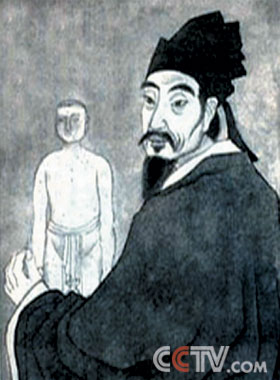| doctor | Wang Wei-yi |
| doctor | Wang Wei-yi |

Emperor Renzong believed that "the ancient classics are extremely refined, but scholars often misinterpret them. It is better to see with one's own eyes than to rely on hearsay, and it is better to have a physical model than to rely on written descriptions." (From the preface by Wang Wei-yiTongren Shuxue Zhenjiu Tujing‧Xia Song reprinted by China Bookstore, 1987). Thus, Wang Wei-yi was responsible for the design, and the government organized craftsmen to cast two human body models out of fine bronze in the fifth year of Tiansheng (1027). Wang's newly compiled acupuncture and moxibustion work was then named Tongren Shuxue Zhenjiu Tujing). The book was promulgated nationwide by the government, complementing the acupuncture and moxibustion bronze models.
As an official text, Tongren Shuxue Zhenjiu Tujing systematically summarized the achievements of acupuncture and moxibustion before the Song Dynasty, playing a significant role in promoting the development of acupuncture and moxibustion during the Song Dynasty and later periods. The design and creation of the acupuncture and moxibustion bronze models were a major innovation in medical history. As the earliest human body models and intuitive teaching tools for acupuncture and moxibustion, they hold significant importance in medical history. Wang Wei-yi's contributions to this are indelible.
bubble_chart Other Related Items